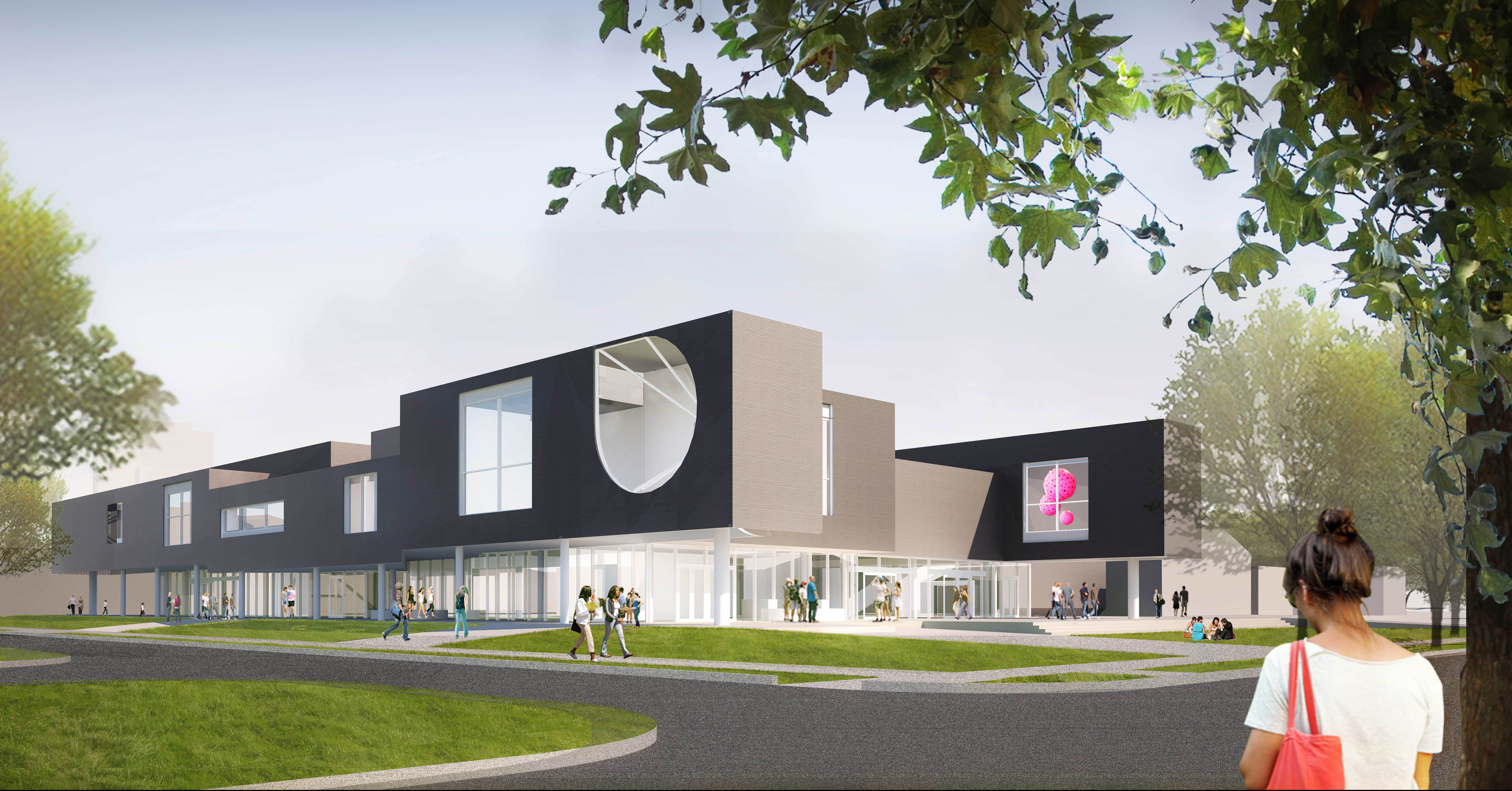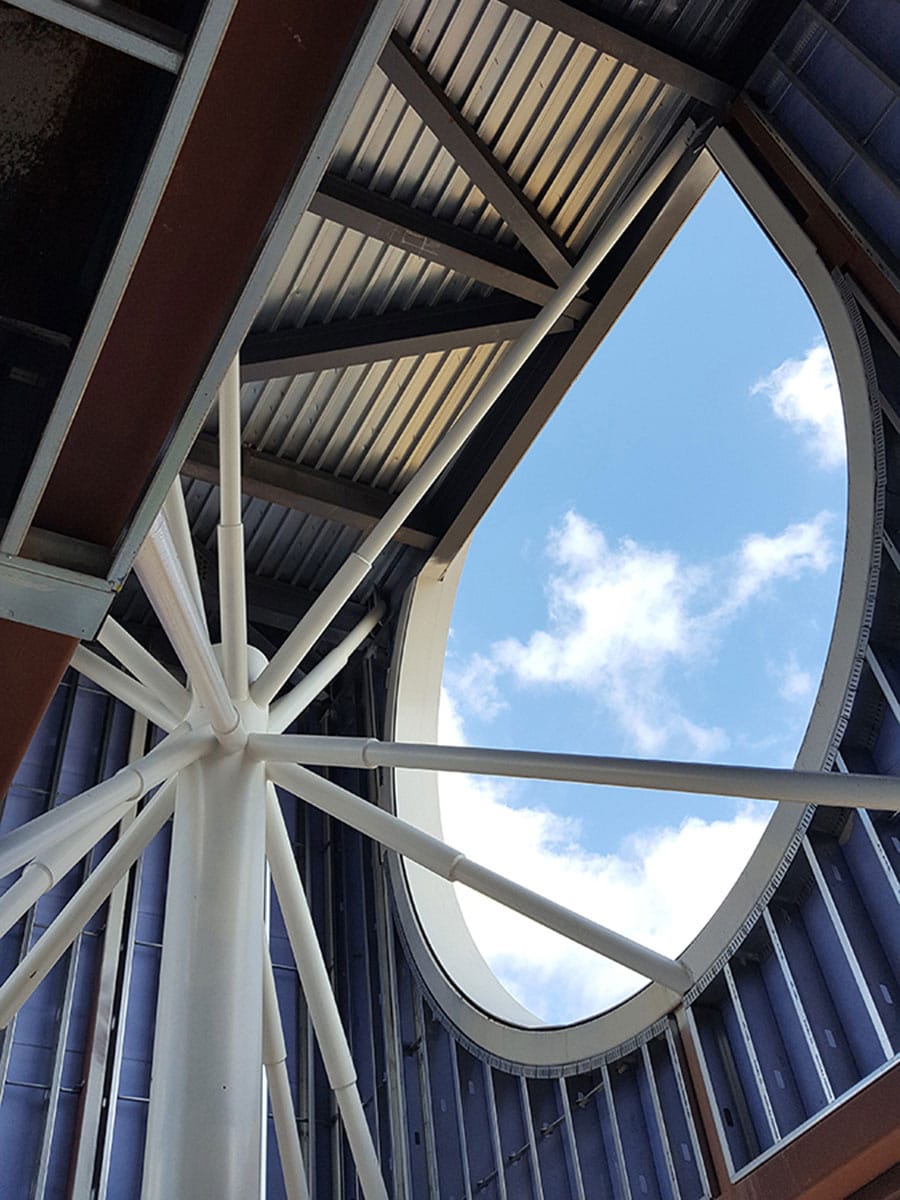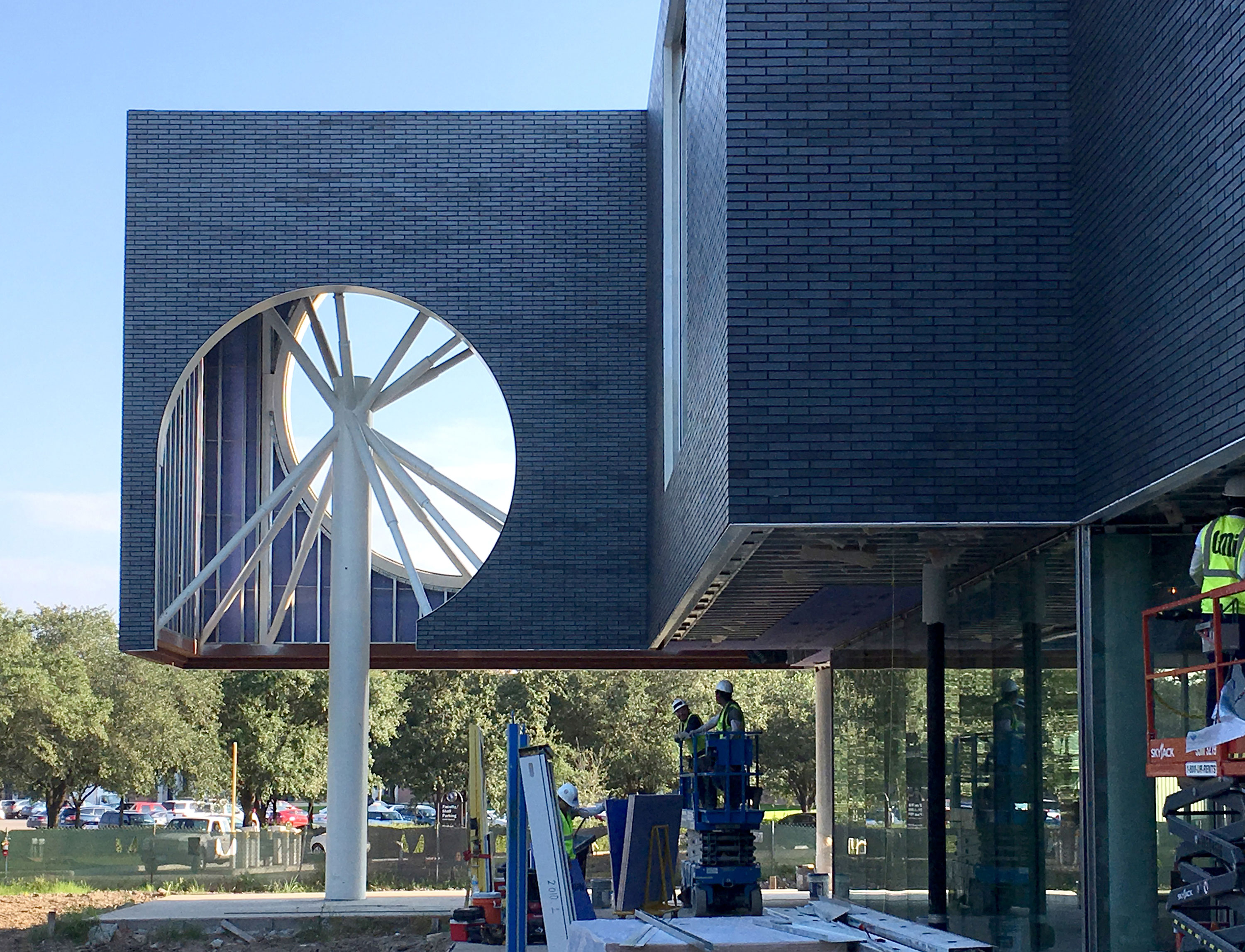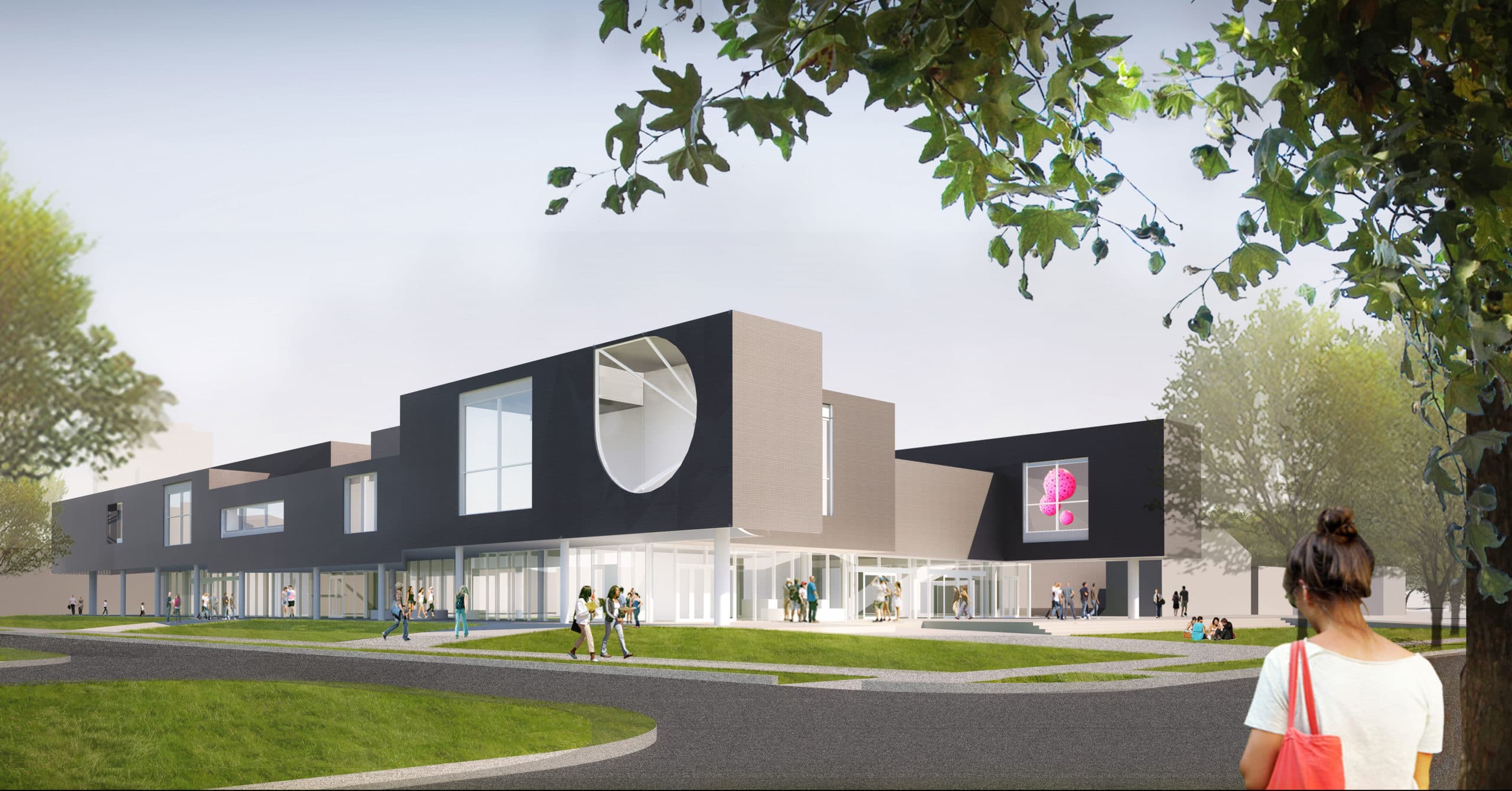
The new Moody Center for the Arts has three large lanterns that light up at night, and two are supported by starburst columns.
[Courtesy of Michael Maltzan Architecture, Inc.]
Rice University’s new Moody Center for the Arts shows off an open concept and collaborative spaces
PROJECT
LOCATION
Houston
SIZE
50,000 square feet
COMPLETION
2017
COST
$30 million
TEAM
ARCHITECT
Michael Maltzan Architecture
CONTRACTOR
Linbeck
LIGHTING DESIGN
Horton Lees Brogden
The possibilities are endless—that’s the guiding principle behind the new, two-story Moody Center for the Arts at Rice University in Houston. The LEED Silver project opens to the public in February 2017 as a collaborative center for the arts, sciences, and humanities.
The cross-disciplinary building establishes a new arts district on campus, with proximity to the Shepherd School of Music and the James Turrell Twilight Epiphany Skyspace, but it’s also a place where the public can be inspired, with public shows and free admittance year-round.
Los Angeles-based Michael Maltzan Architecture designed the 50,000-square-foot, $30 million center as an experimental platform for making and showcasing works across disciplines, as well as a flexible teaching space to encourage new creations and techniques, and an outlet for creative partnerships.

Moody Center for the Arts at Rice University
[Courtesy of Michael Maltzan Architecture, Inc.]
Rice University (population 6,623) just so happens to have one of the top graduate architecture programs in the United States, so how the new building looks is no small deal. The Moody Center for the Arts features bold geometric shapes with an invitation to look a little closer, as anyone can peer into the collaborative spaces. Outside, a towering lantern and starburst column serves as a focal point and is just one example of how the center itself is a beacon, shining light on creativity and encouraging students, artists, and the public alike to think outside of the box.
The Design
Openness is key to the Moody Center, inside and out. Floor-to-ceiling glass makes up most of the first floor, so anyone passing by is immediately drawn in. Upstairs, arcades created by the second floor’s cantilevered massing create shaded walkways. Not only is it comfortable for folks passing through on warm days, it also makes the brick-clad upper story look like it’s levitating. Large picture windows punctuate the articulated brick façade, drawing a plethora of light inside.
In addition to all of that natural light, three large signature lanterns light up the area at night. Two can be seen at each end of the northern arcade, supported by the “starburst” columns, and the third houses the center’s coffee lounge.
Once inside, your gaze is pulled in multiple directions, as you can glimpse many collaborative spaces. On the first floor of the Moody you’ll find the 150-seat theater for performing arts, the Skylight Gallery and Central Gallery for exhibitions and experimental performances, two media arts galleries, the Creative Open Studio, and a lab that includes a wood shop, metal shop, paint booth, rapid prototyping areas, and student classroom. Outside the Skylight Gallery is an outdoor projection wall. Along the building’s north façade, a wide set of stairs rises from the first floor and turns back toward the Moody’s interior, creating an interior amphitheater that serves as an informal social space. The second floor features a breakout area, classrooms, studios, a technology lending library, audiovisual editing booths, the coffee lounge, and administration spaces.

Moody Center for the Arts at Rice University
[Courtesy of Michael Maltzan Architecture, Inc.]
Maltzan, founder and principal of Michael Maltzan Architecture, Inc., says the entirety of the design is focused on transparency. Take the double-height Creative Open Studio, for example. He views it as an interior quad—a place where many different students and makers can come together to collaborate or view projects. “This interior landscape brings the most diverse programmatic functions into contact with one another, while opening views out to the campus,” he says. “This emphasis on transparency extends to the building’s exterior, whose brick-clad upper story seems to float over an entry level encased in floor-to-ceiling glass. With pedestrian paths cutting across the site’s open lawn and into the building, a set of stairs on the north facade turning back to form an interior amphitheater, and the cantilevered mass of the second story creating covered walkways below, the Moody will be one of the most active social spaces on the Rice campus and a welcoming facility for all.”
The Purpose
Considering the Moody was created to embrace work of all kinds, it also has flexible teaching spaces and places where visitors can access artists from all over the world. Beginning in February and continuing through the semester, the Moody will host artists like Olafur Eliasson—known for large-scale installation art that plays with light, water, and air temperature—and New York City’s Dusan Tynek Dance Theatre as part of its inaugural season of programming, which the public is invited to enjoy.
Rice University’s president says the new center is another shining example of how the college and the wider community are one. “We are proud of our strong reputation in the sciences, engineering, and the professions and equally proud of our success in the arts and humanities, which contribute in essential ways to every education and every intellectual endeavor,” says David Leebron, president of Rice University. “The Moody
Center is a stake in the ground for our continuing arts commitment, and we look forward to welcoming everyone from Houston, across the nation, and abroad to the Moody.”

